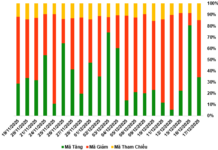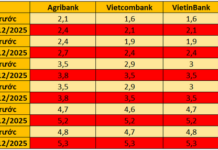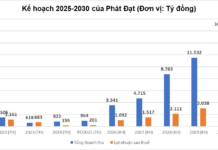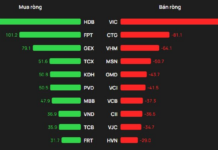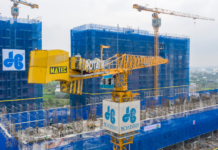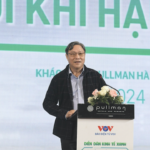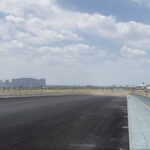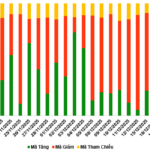During the discussion on this content, some delegates suggested considering extending the scope of the project to Can Tho. There were suggestions to lengthen the route from Lang Son to Ca Mau, approximately 2,110 km…
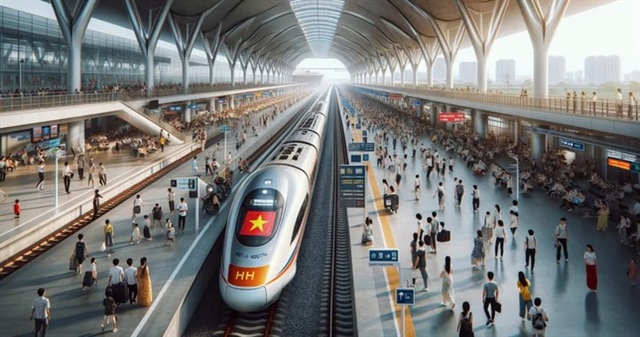
The total length of the North-South high-speed railway is approximately 1,541 km. |
The government shared that the master plan for the railway network for the period of 2021-2030, with a vision towards 2050, has already outlined the development of new railway routes along the North-South corridor, from Lang Son to Can Tho, spanning about 1,871 km. This includes 3 routes: Lang Son – Hanoi, Hanoi – Ho Chi Minh City, and Ho Chi Minh City – Can Tho.
The Lang Son – Hanoi route is a conventional railway, and detailed planning is underway to secure investment capital.
The Hanoi – Ho Chi Minh City route is designed as a high-speed railway, while the Ho Chi Minh City – Can Tho route is of the conventional type.
Therefore, the government proposes to maintain the scope of the project from Hanoi to Ho Chi Minh City as per the draft resolution.
Regarding the suggestion to reconsider the section from Phu Ly to Ninh Binh, the government shared that the route option from Phu Ly to Ninh Binh has been carefully studied under the guidance of the government. During this process, three alternatives were proposed for comparative analysis and selection.
As the southern hub of the North Coastal Region, Nam Dinh city is expected to have a population of about 600,000 by 2040, serving as a significant transportation hub. The city also attracts people from neighboring localities in the Red River Delta, such as Thai Binh and Hung Yen, totaling approximately 4 million people.
According to forecasts, by 2050, the demand for travel to and from Nam Dinh station is expected to reach nearly 3 million passengers per year. Considering the investment and operation costs over 30 years, the 12 km section passing through Nam Dinh is estimated to cost approximately 1.66 billion USD, with expected benefits reaching 2.06 billion USD.
Citing global experiences, the government highlighted that there are instances where high-speed railways take a detour to pass through major centers, attracting passengers, instead of taking a direct route. Hence, the government proposes to retain the route option presented in the pre-feasibility study report.
Moving forward, the government affirmed that it would direct the Ministry of Transport to continue reviewing the route through this area to ensure economic and technical feasibility.
Subsequently, the government adjusted the project with a total route length of approximately 1,541 km, starting at the Ngoc Hoi station in Hanoi and ending at the Thu Thiem station in Ho Chi Minh City, traversing 20 provinces and cities.
This content has been presented, discussed, and will be put to a vote for approval of the investment policy on the last day of the National Assembly session, November 30.
|
The North-South high-speed railway is designed as a double-track line with a standard gauge of 1,435 mm and a design speed of 350 km/h. The main route is approximately 1,541 km long, featuring 23 passenger stations. The preliminary total investment estimate for the project is about 67.34 billion USD. Ticket prices are expected to be set at 60-70% of airfare. |
Luân Dũng
‘Leaping into a New Era’: Ho Chi Minh City Aims for a Per Capita Income of $13,000 per Year
To enter a new era, Ho Chi Minh City needs to quantify and select the most important indicators. In particular, the city must achieve an average income of approximately $13,000 per capita per year in the next five years to meet the standards of developed countries. This ambitious goal sets a challenging yet achievable target for Vietnam’s economic hub, reflecting a commitment to progress and a desire to elevate the city’s standing on a global scale.
The Slow Progress of Dong Nai’s Key Projects
Despite efforts to accelerate development, key infrastructure projects in the province of Dong Nai have been consistently delayed. Among these projects, one has fallen behind schedule by 500 days, while another faces the challenge of completing a bridge over a river without the necessary connecting roads.

